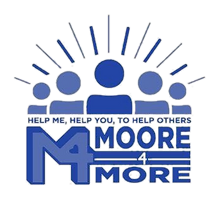The Financial Academy For Youth Program
FAY Description – The purpose of the FAY program is to empower and educate the next generation through comprehensive financial literacy programs. We aim to create pathways to economic opportunities and advocate for wealth-building strategies. Our dedication lies in breaking down barriers and providing accessible resources to youth from diverse backgrounds, equipping them with the knowledge and tools to make informed financial decisions. Ultimately, we strive to empower individuals to achieve financial independence, benefiting themselves and their communities.
Financial Literacy Curriculum for 6th Grade–12th Grade
Overview:
This financial literacy curriculum is designed to empower students aged 11 to 19 with the knowledge and skills necessary to make informed financial decisions and plan for their future. Through a series of interactive lectures, activities, homework assignments, guest speakers, field trips, simulations, and a culminating financial project, students will develop a strong foundation in financial literacy from 6th grade through their senior year.
The Moore 4 More program offers classes twice a week, each session lasting between 75 to 90 minutes, over a period of 9 weeks. In the 10th week, students will present their final projections. To culminate the program, a Skills, Drills, and Dollars Bills ceremony will be held to showcase what the students have learned. At this ceremony, students will receive certificates of completion and awards. Family and friends are encouraged to attend and celebrate the achievements of the students. The event typically lasts 2 1/2 to 3 hours and includes refreshments for attendees.
This comprehensive financial literacy curriculum aims to provide students with the knowledge and skills necessary to navigate the complexities of personal finance and plan for their future. By incorporating a variety of instructional methods and activities, students will develop practical financial literacy skills that will serve them well throughout their lives. Thank you for your participation in this program, and I look forward to seeing the impact it has on your financial well being.
Audience:
Your program audience typically includes individuals from underserved communities, particularly youth and young adults aged 11 to 19. These individuals may come from diverse socioeconomic backgrounds and may have limited access to financial education resources. They could be students in middle school, high school, or even early college years, seeking to learn about financial literacy and improve their financial management skills. The program aims to empower them with the knowledge and tools necessary to make informed financial decisions and achieve financial independence.
Purpose:
The purpose of this curriculum is to equip students with practical financial literacy skills that they can apply throughout their lives. By covering topics such as money management, banking, credit, budgeting, investing, taxes, career planning, and college financial planning, the curriculum aims to foster responsible financial behavior and empower students to achieve their financial goals.
Education Standards:
- National Standards for Financial Literacy (Council for Economic Education)
- Common Core State Standards for Mathematics and English Language Arts
Objectives:
By the end of the curriculum, students will be able to:
1. Understand the importance of financial literacy and its relevance to personal financial success.
2. Demonstrate proficiency in managing income, expenses, savings, credit, and investments.
3. Analyze financial products and services, such as bank accounts, credit cards, and investment options.
4. Develop and implement effective budgeting and spending strategies to achieve financial goals.
5. Evaluate the costs and benefits of different career paths, including corporate, entrepreneurship, and trade occupations.
6. Navigate the college financial planning process and explore financial aid options for higher education.
Program expectations encompass the anticipated outcomes, objectives, and standards that participants are expected to meet throughout the duration of the program. These expectations serve as guidelines for both program organizers and participants and typically include:
1. Attendance: Participants are expected to attend all scheduled sessions, workshops, and activities unless there are valid reasons for absence.
2. Participation: Active engagement in program activities, discussions, assignments, homework is expected from all participants.
3. Respect: Participants are expected to respect their peers, instructors, guest speakers, and program staff at all times.
4. Timeliness: Participants should arrive on time for all sessions and submit assignments by the specified deadlines.
5. Preparation: Participants are expected to come prepared for each session by completing assigned readings, tasks, or prework.
6. Collaboration: Collaboration and teamwork are encouraged among participants to foster a supportive learning environment.
7. Accountability: Participants are accountable for their actions, contributions, and progress throughout the program.
8. Professionalism: Professional behavior, including appropriate attire, communication, and demeanor, is expected from all participants.
9. Feedback: Participants are encouraged to provide constructive feedback to program organizers and instructors to improve the program’s effectiveness.
10. Goal Achievement: Participants should work towards achieving their personal and program related goals, applying the knowledge and skills gained during the program.
Program Timeframe: A 10-week duration indeed offers a great balance between depth of learning and sustained engagement. Here’s a concise version of your points:
1. Sufficient Learning Time: A 10-week duration allows comprehensive coverage of content without overwhelming students, fostering deep engagement and reflection.
2. Consistency and Routine: Over several weeks, students establish a consistent learning routine, enhancing retention and habit formation.
3. Progress Tracking: Regular assessments enable organizers to track progress, ensuring students meet objectives and make meaningful strides.
4. Building Relationships: Longer programs foster stronger bonds among participants, instructors, and mentors, creating a supportive community.
5. Application and Reflection: Extended duration enables students to apply learning in real world contexts, promoting deeper understanding and skill development through practice and feedback.
With these benefits, your 10-week program is well positioned to achieve meaningful outcomes for your students.
four cores of wealth and essential and impulsive financial decision-making:
Core 1: Mental/Emotional
- Purchase Reflection: How did you feel during the purchase? Reflect on your emotions and any factors that influenced your decision.
- Exchange of Money: Describe your feelings during the exchange of money. Did you feel confident or hesitant?
- Loan Reflection: If you loaned money to someone, how did it make you feel? Reflect on your motivations and any concerns you may have had.
Core 2: Financial
- Item Reflection: Why do you want the item? What value does it have to you? Consider its usefulness and whether it aligns with your financial goals.
- Resale Potential: How could or would you resell the item if needed? Consider its depreciation and market demand.
- Financial Assessment: Do you have enough money to purchase the item? How does this decision affect your financial situation and goals?
- Need vs. Want: Reflect on whether you truly need or just want the item. Consider its importance and impact on your finances.
Core 3: Spiritual
- Value Reflection: Reflect on the spiritual value of the item. Does it align with your values and beliefs?
- Gratitude Practice: Express gratitude for what you already have and consider whether the item adds genuine value to your life.
- Spiritual Well-being: How does this financial decision align with your spiritual well-being? Consider whether it brings peace or discord to your soul.
Core 4: Physical
- Physical Well-being: Consider how the purchase affects your physical well-being. Will it improve or hinder your health in any way?
- Mental Health: Reflect on how the decision impacts your mental health. Does it bring joy or stress?
- Emotional Well-being: How does the decision affect your emotional state? Are you feeling fulfilled or regretful?
Essential vs. Impulsive Decision Making
- Essential Decisions: Identify essential financial decisions that are necessary for your well-being and future goals.
- Impulsive Decisions: Recognize impulsive financial decisions driven by emotions or external influences.
Financial Strategies
- Budgeting: Create a budget to manage your finances and prioritize spending on essential items.
- Saving: Develop a savings plan to afford desired items without compromising your financial stability.
- Delayed Gratification:Practice patience and delay gratification to avoid impulsive purchases and make better financial decisions.
- Seeking Advice: Consult with trusted adults or financial advisors for guidance on major financial decisions.
By regularly reflecting on these aspects of financial decision-making, students can develop a deeper understanding of their financial behaviors and make more informed choices for their future wealth and well-being.
Ideas/Links
- Statistics about the lack of financial literacy in underserved/minority communities
- The importance of early financial literacy education for youth
- Positive outcomes of financial literacy among youth
- Add a section that shows how many youth/student we have helped
The FAY application link – https://forms.gle/7gbhPkP8SB6FmNDUA


